Kennen Sie Henry Dearborn, William Hull, Stephen van
Rensselaer oder Alexander Smyth?
Winfield Scott könnten Sie kennen.
Diese Herren standen auf der einen Seite.
Ich sehe förmlich die Fragezeichen über Ihrer Stirn.
Was verbindet all diese Namen? Wie kommt es, dass sie
–zumindest hier in Kontinentaleuropa- nicht bekannt sind?
Verbunden sind diese Menschen durch einen Krieg. Einen
Krieg im Jahr 1812.
Na und da hätten wir doch schon das erste Problem.
Mit dem Jahr 1812 verbinden wir in Deutschland, aber auch
in Frankreich und in anderen Ländern Europas, den Russlandfeldzug Napoleons.
Die Wenigsten denken beim Jahr 1812 an den Britisch-Amerikanischen
Krieg, der in diesem Jahr begann, und der nebenbei bemerkt, eigentlich genau
andersherum bezeichnet werden müsste, nämlich Amerikanisch-Britisch, weil ja
die Kriegserklärung von Amerika ausging.
Die ersten 4 Namen stehen dabei für Generäle der
Amerikaner, die eins gemeinsam haben:
Sie glänzten durch Niederlagen. Deshalb hat man sie auch
vergessen.
BEWUSST vergessen.
Winfield Scott hat wenigstens eine Schlacht in diesem
Krieg gewonnen, um dann später als Oberbefehlshaber von Ory und George bei
Fackeln im Sturm, ähhhhh, im Amerikanisch-Mexikanischen Krieg zu fungieren, und
als großer Sieger einen entsprechenden Nimbus zu erlangen.
Im Krieg von 1812 – so bezeichnen die Amerikaner den
Konflikt (War of 1812) – war er als Brigadier General mit 28 Jahren der jüngste
General der Amerikaner. Hier glänzte Scott als Befehlshaber in der Schlacht bei
Chippewa. In einer anderen Schlacht – bei Lundy’s Lane – hat er dann zwar auch
irgendwie kläglich versagt, was fast zum kompletten Verlust seiner Brigade, und
zu seiner eigenen Verwundung geführt hatte. Er ging aber dennoch merkwürdigerweise
in seinem Ruf unbeschadet aus dem Konflikt hervor und konnte seinen militärischen
Werdegang in den nächsten Jahrzehnten immer weiter ausbauen.
Glück gehabt, würde ich da mal sagen.
In meinen Augen liegt seine wahre Bedeutung in diesem
Krieg aber eher in einem Zitat begründet. Er hat nämlich das ausgesprochen, was
man unweigerlich denkt, wenn man sich mit der Kriegsführung der Amerikaner im
Krieg von 1812 beschäftigt:
Er titulierte öffentlich seine Offizierskollegen als
„schwachköpfig“!
Na und wo er Recht hat, da hat er halt auch Recht.
Na und irgendwie ist mir Winfield Scott da auch irgendwie
sympathisch geworden, hatte ich ihn bis dato doch nur als dicken, gemütlichen,
älteren Oberbefehlshaber der alten US Armee aus dem Jahr 1861 vor Augen.
Hätte nie gedacht, dass er mal so frech war.
Sir Isaac Brock, den ich da oben erwähnt habe, ja der
konnte wiederum was. Der stand aber auf der anderen Seite. Der effektiveren.
Also auf der Seite der Briten respektive Kanadas.
Na ich muss ja als Europäer immer schmunzeln, wenn es
Stimmen gibt, die noch heute den nördlichen Nachbarn der USA, als das bessere
Amerika bezeichnen.
Ich möchte jetzt keinem US Amerikaner zu nahe treten, und
würde dieses Statement jetzt generell auch nicht so unterschreiben.
Beide Länder sind irgendwie klasse. Haben ihre
Eigenheiten, ihre Stärken, aber auch Schwächen.
Aber militärisch betrachtet trifft diese Aussage
zumindest auf das Jahr 1812 nun wirklich zu.
Sir Isaac Brock trägt noch heute den Ehrentitel „Retter Kanadas.“ Ihm wird eine Schlüsselrolle
bei der erfolgreichen Verteidigung des Landes gegen die US Amerikaner
zugeschrieben; und das, obwohl er tatsächlich schon zu Beginn des Krieges im
Jahr 1812 fiel.
Brock hatte bereits sehr früh erkannt, dass die seit
Jahren andauernden Spannungen mit den USA in einen Krieg münden könnten. Sein
Vorgesetzter Generalgouverneur Sir George Prevost sah das nicht unbedingt so,
das störte Brock dann allerdings auch nicht, Maßnahmen zu treffen.
So macht man das als wirklicher Stratege. Agieren nicht
reagieren.
Verteidigungsanlagen wurden verbessert; die Milizen
einberufen und ausgebildet; na und nicht zuletzt wurden Bündnisse mit den
Indianern geschlossen, deren Gebiete ja zu diesem Zeitpunkt immer noch einen
„Pufferstaat“ zwischen den USA und Kanada bildeten.
Ja und als dann die Kriegserklärung der Amerikaner kam,
da wartete er nicht hinter der vermeintlichen Sicherheit der Großen Seen, nein,
er griff an und überraschte die Amerikaner.
Er nahm in einem Überraschungsangriff Fort Mackinac am
Zusammenfluss von Lake Michigan und Lake Huron ein.
Tecumseh – den Namen haben sie sicherlich auch schon mal
irgendwo gehört -, der Häuptling der Shawnee, aber auch die weißen Bewohner der
Grenzgebiete waren echt beeindruckt. Die liebten Macher.
Gemeinsam stellten sie sich dann auch der amerikanischen
Invasion entgegen, und konnten die Invasoren sogar zur Kapitulation zwingen,
obwohl die Amerikaner ihnen zahlenmäßig weit überlegen waren.
Jetzt hab ich Ihnen auch schon verraten, wo dieser
Konflikt stattgefunden hat.
NATÜRLICH!!!!
In meinem Lieblingsgebiet der USA; dem Nordwesten. An der
alten Indianergrenze zu Kanada hin.
Lustigerweise hatte ich persönlich für den 1812er Krieg
immer nur die Schlacht vor New Orleans und die dortige Niederlage der Engländer
vor Augen.
Da bin ich aber wieder Hollywood geprägt, na und ich
denke, das liegt nur an diesem Film mit Yul Brynner, „Der König der
Freibeuter“, den ich aber irgendwie richtig öde fand.
Ich scheine da aber nicht alleine mit meiner Meinung zu
sein, denn das Lexikon des internationalen Films wertet wie folgt: „… breit
ausgespielt, mit nur geringer Spannung. Beachtung verdient der Sinn für
ungewohnte Farbwirkungen.“
Ja; bunt kam er mir schon vor, aber eben langweilig.
Na und bis vor ein paar Tagen hatte ich auch wirklich
keinen Grund mich mit diesem Konflikt auseinanderzusetzen.
Nun habe ich allerdings bei Amazon ein Buch entdeckt. Es ist von Alan Taylor und trägt den
Titel: The Civil War of 1812: American Citizens, British Subjects, Irish Rebels
& Indian Allies.
Sehr interessant, ziemlich günstig und vor allem richtig
umfangreich. Der Konflikt wird hier von allen Seiten ausführlich beleuchtet,
und der Ansatz auch den 1812er Krieg als Bürgerkrieg zu werten, ist konsequent
und richtig. Hinzu kommt, dass im Schwerpunkt der Konflikt an der kanadischen
Grenze untersucht und dargestellt wird.
Na und da war mein Interesse wieder geweckt.
Natürlich, dachte ich. Schon wieder ein Konflikt, wo
meine Conquest und Perry Indianer kämpfen können.
Na und auch wieder gegen die gleichen Gegner, nur dass
die jetzt wiederum etwas anders aussehen, als die Gegner in den Jahrzehnten zuvor.
Nun kämpfte man nicht mehr mit Leggins und dem Dreispitz
wie im FIW, oder zurechtgestutzten Kappen wie im AWI, nein, jetzt latschte man
doch tatsächlich mit Tschakos und teilweise mit Zylindern durch die Wildnis.
Völlig strange.
Richtig IN war zum damaligen Zeitpunkt das
fransenbesetzte Jagdhemd, das ja schon George Washington irgendwie gefallen
hatte, und jetzt in diesem Krieg allgegenwärtig war.
Die amerikanische Armee bestand damals zum großen Teil
aus Milizen, und dieses Jagdhemd war dann ja schon traditionell für diese
Einheiten.
Na und das wurde wiederum in Kombination mit einem
Zylinder getragen. Das muss man sich trauen.
Mode nimmt ja generell auf die Entwicklung von Uniformen
Einfluss. Schlimm ist es halt nur, wenn Modetrends so gar nichts zum
militärischen Nutzen, zur militärischen Aktivität und zur militärischen
Notwendigkeit passen.
Im Krieg von 1812 war das auf amerikanischer Seite definitiv
so. Irgendwie haben die Uniformen etwas improvisiertes, etwas, was nicht so
wirklich passt.
Aber es ist sicherlich auch diese Exotik, die mich andererseits
zu begeistern versteht. Da geht einem als Wargamer dann schon das Herz auf, und
man sagt. Heh? Warum eigentlich nicht? Könnte ein nettes Skirmishspiel ergeben.
Na und mittlerweile gibt es auch einige Figurenreihen,
die diesen Konflikt abdecken.
Ganz am Anfang muss man da einfach Old Glory und Wargames
Foundry nennen. Zwei traditionelle Firmen, die Miniaturen zu diesem Konflikt
schon länger im Programm haben.
https://www.oldglory25s.com/index.php?cat_id=374&catname=%27War%20of%201812%27
https://www.wargamesfoundry.com/collections/war-of-1812
https://www.wargamesfoundry.com/collections/war-of-1812-americans
https://www.oldglory25s.com/index.php?cat_id=374&catname=%27War%20of%201812%27
https://www.wargamesfoundry.com/collections/war-of-1812-americans
Dann wäre da noch Knuckleduster zu nennen, die
tatsächlich eine sehr umfangreiche Range besitzen Diese ist aber schon sehr
knubbelig modelliert, und nicht jedem werden diese Figuren gefallen.
Ich bin zum Beispiel kein Fan davon.
Aber Geschmäcker sind da ja schon recht unterschiedlich,
und deshalb möchte ich an dieser Stelle auch gerne auf diesen Hersteller
verweisen.
http://knuckleduster.com/shop/index.php?route=product/category&path=1_21_22
http://knuckleduster.com/shop/index.php?route=product/category&path=1_21_22
Richtig gut wiederum ist die von Hicks modellierte Serie,
die von Brigade Games vertrieben wird.
Gegen die spricht jetzt im Grunde nur, dass sie keinen
Europavertrieb haben, und die Minis aus den USA bestellt werden müssen.
Das heißt wiederum für den europäischen Endverbraucher
erhöhte Kosten.
Wer aber diesen Konflikt bespielen will, kommt nach
meiner Meinung nicht an Brigade Games vorbei.
Es ist definitiv die interessanteste Figurenreihe.
http://brigadegames.3dcartstores.com/War-of-1812_c_450.html
http://brigadegames.3dcartstores.com/War-of-1812_c_450.html
Es sei auch erwähnt, dass Strelets verschiedene Sets in
1/72 anbietet. Eine günstige und für manche Sammler vielleicht auch
ausreichende Serie für diesen Konflikt.
Sie können anhand der Bilder, die ich Ihnen jetzt gezeigt
habe, auch deutlich sehen, was ich oben meinte, oder?
Schon sehr speziell wie die Einheiten aussehen.
Umso merkwürdiger für Augen eines Europäers, weil der
Look der Gegner, eben der Engländer, uns ja so bekannt vorkommt, handelt es
sich doch um die britischen Uniformen der napoleonischen Zeit.
Dieses Aufeinandertreffen von Gewohntem mit
Ungewöhnlichem ist letztendlich auch das, was den Betrachter verwirrt.
Ich werde mir auf jeden Fall ein paar Minis zulegen, weil
ich Indianer und Briten ja besitze.
Fehlt ja nur noch eine Fraktion, die zu bemalen ist. Was
will man eigentlich mehr?
Nochmals zurück zu dem Konflikt.
Verglichen mit den Schlachten und Gefechten, die zum
gleichen Zeitpunkt in Europa tobten, wirkt der Konflikt natürlich sehr
provinziell.
Die Schlachten wurden von wenigen tausend, manchmal nur
hunderten, von Soldaten ausgetragen. Die Gesamtverluste betrugen auf amerikanischer
Seite ca. 3800 Tote, 4500 Verwundete und geschätzte 15.000, die an anderen
Ursachen des Krieges starben. Auf britischer Seite ca. 2000 Tote, 3700
Verwundete, und 10000 andere Verluste. Bei den Indianern geht man von weit über
10.000 Toten aus.
Auch die Beilegung des Krieges, und der Friedenschluss
auf Basis des „status quo ante“, ist jetzt nicht unbedingt als spektakulär zu
bezeichnen.
Man sollte sich davon aber nicht verwirren lassen. Die
Bedeutung des Konfliktes ist nämlich dennoch nicht zu unterschätzen.
Letztendlich ging es um den Erhalt Kanadas als Staat.
Hätte die USA den Krieg erfolgreich
geführt, hätte das durchaus Auswirkungen haben können, die im Nachgang auch die
Weltpolitik beeinflusst hätten.
Auch wenn die amerikanische Navy einige spektakuläre
Erfolge in diesem Krieg hatte, die letztendlich die Tradition und das
Selbstverständnis der amerikanischen Marine noch bis heute bestimmen, so muss
man auch hier, genauso wie in den Landschlachten einfach festhalten, dass die
Engländer auch nur einen Bruchteil ihrer Kräfte einsetzten.
Ob England wirklich den kompletten Verlust Kanadas
hingenommen hätte, wage ich dann doch zu bezweifeln.
Spätestens im Jahr 1815, nach Ende der Zwistigkeiten in
Europa, wäre England in der Lage gewesen, alle Kräfte an einen neuen
Kriegsschauplatz zu bringen. Warum also nicht in Amerika landen?
Im „kleinen“ Stil hatte man das ja sogar de facto in
diesem Krieg getan. Die Zerstörung Washingtons ist bis heute DER Schockmoment
für die Amerikaner im Britisch-Amerikanischen Krieg.
(Capitol)
(White House)
Man könnte jetzt noch weiter spekulieren. Aber das möchte
ich nicht tun.
Für den Wargamer gibt es da genügend Szenarien, die er
heranziehen kann. Indianer waren beispielsweise als Verbündete britischer und
kanadischer Truppen bei Tippecanoe (Gefecht aus dem Jahr 1811, das aber quasi
zur Vorgeschichte des Krieges gehört), Frenchtown oder der Schlacht am Thames
River beteiligt.
Es gab aber noch weitere Gefechte in dieser Region. Wer
hier stärker einsteigen möchte, dem empfehle ich das oben zitierte Buch.
(Battle of Tipecanoe)
(Battle of the Thames)
Im Süden gab es auch Kämpfe gegen die Creek und die Cherokee
Indianer. Hier ist das bekannteste Gefecht dasjenige am Horseshoe Bend.
Überhaupt sind sich Historiker heute einig, dass die Indianer die eigentlichen Verlierer des Kriegs von 1812 waren.
Überhaupt sind sich Historiker heute einig, dass die Indianer die eigentlichen Verlierer des Kriegs von 1812 waren.
Im Verhältnis zu ihrem Bevölkerungsanteil hatten sie die
größten Verluste.
Die Indianer im Alten Nordwesten, also die Region, die
heute als der Mittlere Westen der USA bezeichnet wird, waren besiegt. Die
Hoffnung auf einen eigenen Staat war in den Friedensverhandlungen kein Thema.
Zudem hatten die Indianer ihre alte schützende Hand,
nämlich die aus Kanada, verloren. Somit waren die Amerikaner am Zug und konnten
die Indianerstämme immer weiter zurücktreiben, zunächst bis ins heutige
Oklahoma.
Wer also sein altes This Very Ground oder sein Muskets
and Tomahawk Regelbuch mal wieder auspacken will, der sollte sich vielleicht
auch einmal mit diesem Krieg und den vorgestellten Figurenreihen
auseinandersetzen.
Im Grunde genommen ist es ein Muss.
Oder ist Euch ein anderes Kriegsdenkmal bekannt, das einen
Krieg, aber auch das Spielen mit Figuren so thematisiert, wie dieses hier?
(War of 1812 Memorial Toronto)
Das ist ja dann schon fast als ein Auftrag zu werten. Meint Ihr nicht auch?
Do you
know Henry Dearborn, William Hull, Stephen van Rensselaer or Alexander Smyth?
Maybe Winfield
Scott?
These
gentlemen stood on one side.
The most
famous person on the other side was Sir Isaac Brock.
I can
almost see the question marks over your forehead.
What
connects all these names? Why don’t we know them, here in continental Europe?
These
people are connected by a war.
A war in
1812.
Well, and
so we have the first problem.
With the
year 1812, we in Germany, but also in France and other European countries, connect
Napoleon's campaign in Russia .
Fewest
think of the British-American war, which started also in this year, and by the
way, should be called exactly the other way around, namely American-British,
because the declaration of war came from the USA.
The
first 4 names stand for generals of the US who have one thing in common:
They
shone with defeats. That's why they are forgotten.
Winfield
Scott has won at least one battle in this war, then later acting as commander
in the American-Mexican War, he gain a proper nimbus as a great victor.
In the
War of 1812 - as the Americans call the conflict - he was as Brigadier General
at 28 years, the youngest general of the Americans. Here Scott fought
victorious as commander in the Battle of Chippewa.
In
another battle - at Lundy's Lane - he also failed somehow miserably, which had
almost led to the complete loss of his brigade, and to his own wounding.
Strangely enough, however, he emerged unscathed from the conflict and was able
to expand his military career over the next few decades.
Lucky, I
would call that.
But he
is also famous for one remark. He said what you inevitably think when you look
at American warfare in the War of 1812:
He
publicly titled his fellow officers as "weak-headed"!
Well,
and where he is right, he's just right.
Never
thought he was so naughty. Because I know him only as a fat, comfortable,
senior commander in chief of the old US Army from 1861.
Sir
Isaac Brock, whom I mentioned above, yes, he was a great commander.
But he
was on the other side.
The more
effective side.
He was a
general of the British respectively Canada.
Well, as
a European I always have to smile when there are voices that still today call
the northern neighbor of the USA the “better America”.
I do not
want to offend any American, and would not sign that statement in general.
Both
countries are great. Have their peculiarities, their strengths, but also
weaknesses.
But from
a military point of view, this statement really applies at least to the year
1812.
Sir
Isaac Brock still holds the honorary title of "savior of Canada." He
is credited with a key role in successfully defending the country against the
US Americans; and that although he was actually killed at the beginning of the
war in 1812.
Brock
realized very early that years of tensions with the US could lead to war. His
superior Governor-General Sir George Prevost did not necessarily see it that
way, but that did not bother Brock from taking any action.
HE was a
real strategist. Action, not reaction was his order.
Defenses,
forts etc., have been improved. He convoked and trained the militias. Well, and
not least, alliances were formed with the Indians, whose territories were still
a "buffer state" between the United States and Canada at that time.
Yes, and
when the Americans declared war, he did not wait for the supposed safety of the
Great Lakes, no, he attacked and surprised the Americans.
He took
in a surprise attack Fort Mackinac at the confluence of Lake Michigan and Lake
Huron.
Tecumseh
- you've probably heard the name somewhere before - the chief of the Shawnee
was impressed; but also the white inhabitants of the border.
They all
loved men, who act.
Together,
they then opposed the American invasion and even forced the invaders to
surrender, even though the Americans outnumbered them numerically.
Now I
have already told you where this conflict took place.
NATURALLY!!!!
In my
favorite area of the USA; the northwest.
At the
old Indian border to Canada.
I myself
had always the battle of New Orleans and the defeat of the English there in my mind,
when I was thinking about this war.
I think
that's just because of this movie with Yul Brynner, "The King of the
Buccaneers". O.k.; it’s not my favorite film, and I found it somehow
really bleak.
But I do
not seem to be alone with my opinion, because the lexicon of the international
film evaluates as follows: "... played wide, with only low tension.
Attention deserves the sense for unfamiliar color effects. "
Well and
until a few days ago, I really had no reason to deal with this conflict.
Now I
have discovered a book at Amazon. It is by Alan Taylor and is titled: The Civil
War of 1812: American Citizens, British Subjects, Irish Rebels & Indian
Allies.
Very
interesting, pretty cheap and above all, really extensive. The conflict is
illuminated in detail here from all sides, and the approach of evaluating the
1812 war as civil war is consistent and correct. In addition, the focus on the
conflict at the Canadian border is examined and presented.
My
interest was reawakened.
Of
course, I thought.
Another
conflict where my Conquest and Perry Indians can fight their skirmishes.
Their
opponents are the same of the former conflicts around that border, but they
look a little different than the opponents in the decades before.
They
fought not in leggings and tricornes like in the FIW, or with trimmed caps as
in the AWI, no, now they marched with shakos and sometimes with cylinders
through the wilderness.
Totally
strange.
Correct
IN at the time was the fringed hunting shirt. Also a faible of George
Washington. It was now ubiquitous in the war.
At that
time, the American army consisted largely of militia, and this hunting shirt
was then already traditional for these units.
Well and
that hunting shirt, was really worn in combination with a cylinder. You have to
dare that.
Fashion
generally influences the development of uniforms.
It is
only bad if fashion trends don’t fit so well for military use, for military
activity and military necessity.
In the
war of 1812 this was definitely the case on the American side. Somehow the
uniforms have something improvised, something that does not really fit.
But it
is certainly also this exotic look that excite me.
As a
wargamer, your heart will open and you say.
Heh? Why
not?
Could
make a nice skirmish game.
Well and
now there are also some figures that cover this conflict.
At the
very beginning you just have to call Old Glory and Wargames Foundry.
Two
traditional companies that have miniatures for this conflict.
Then there
would be Knuckleduster, which actually have a very extensive range. But this
one is modeled very knobbly, and not everyone will like these figures.
For example,
I'm not a fan of it.
But
tastes are quite different, and that's why I would like to refer to this
manufacturer at this point.
In turn,
Paul Hicks' modeled great miniatures, which are distributed by Brigade Games.
They look really good.
The only
thing that really speaks against them right now is that they do not have any
European distribution and that the minis have to be ordered from the USA.
This in
turn means increased costs for the European customer.
But I
recommend everyone who wants to play this conflict, to use the range of Brigade
Games.
It is
definitely the most interesting series of figures.
Also you
can use the 1/72 series of Strelets. There are many sets for this conflict.
You can
clearly see from the pictures that I showed you now, what I stated above.
The
units look is really very special.
Strange
for the eyes of an European, because the look of the opponents, the british
army, is so familiar, because the British uniforms are those of the Napoleonic
era.
This
clash of the familiar with the unusual is ultimately what confuses the European
viewer.
I'll
definitely get a few minis because I own Indians and British.
So,
there is only one faction that is to paint.
What do
you want more?
Back to
the conflict.
Compared
with the battles that were raging in Europe at the same time, the conflict is
of course very provincial.
The
battles were fought by soldiers from a few thousand, sometimes only hundreds.
The total losses on the American side were about 3,800 dead, 4,500 wounded and
an estimated 15,000 who died of other causes of the war. On the British side
about 2000 dead, 3700 wounded, and 10,000 other losses. The Indians are said to
have over 10,000 dead.
The
settlement of the war, and the peace based on the "status quo ante"
So it is not necessarily spectacular.
Bu. Be
not confused. Nevertheless, the importance of the conflict is not to be
underestimated.
Ultimately,
it was about preserving Canada as a state. If the US had waged the war
successfully, it could have had repercussions that would have influenced world
politics in the aftermath.
Even if
the American Navy had some spectacular successes in this war, which still
determine the tradition and the self - understanding of the American navy until
today, one has to admit that the English went only with a part of their forces
in this war.
I dare
to doubt, that the king would have accepted the complete loss of Canada.
At the
latest in 1815, after the end of the quarrels in Europe, England would have
been able to bring all forces to a new theater of war.
So why
not invade the USA?
In the
"small" style, this had actually been done de facto in this war. The
destruction of Washington is still THE shocking moment for US Americans in the
British-American War.
One
could now speculate further. But I do not want to do that.
For the
Wargamer there are enough scenarios that he can use. For example, Indians were
involved as allies of British and Canadian troops at Tippecanoe (battle of
1811, but more or less part of the prehistory of the war), Frenchtown or the Battle
of the Thames River.
But
there were other battles in this region. If you want to get more involved here,
I recommend the above quoted book.
In the
south, there were also fights against the Creek and the Cherokee Indians.
Here's the best-known battle of the Horseshoe Bend.
In fact,
historians today agree that the Indians were the real losers of the 1812 war.
In
proportion to their share of the population they had the biggest losses.
The
Indians in the Old Northwest, the region now referred to as the Midwestern
United States, were defeated. The hope for a separate state was not an issue in
the peace negotiations.
In
addition, the Indians had lost their old protective hand, namely those from
Canada. Thus, the US Americans were able to drive back the Indian tribes more
and more, first to today's Oklahoma.
If you
want to unpack your old This Very Ground or your Muskets and Tomahawk rulebook,
you might want to get to grips with this war and the series of figures I presented
here.
It's
basically a must.
It’s a
must be for wargamers. Just have a look at that memorial.
Miniatures
representing a war.
That’s
really new.


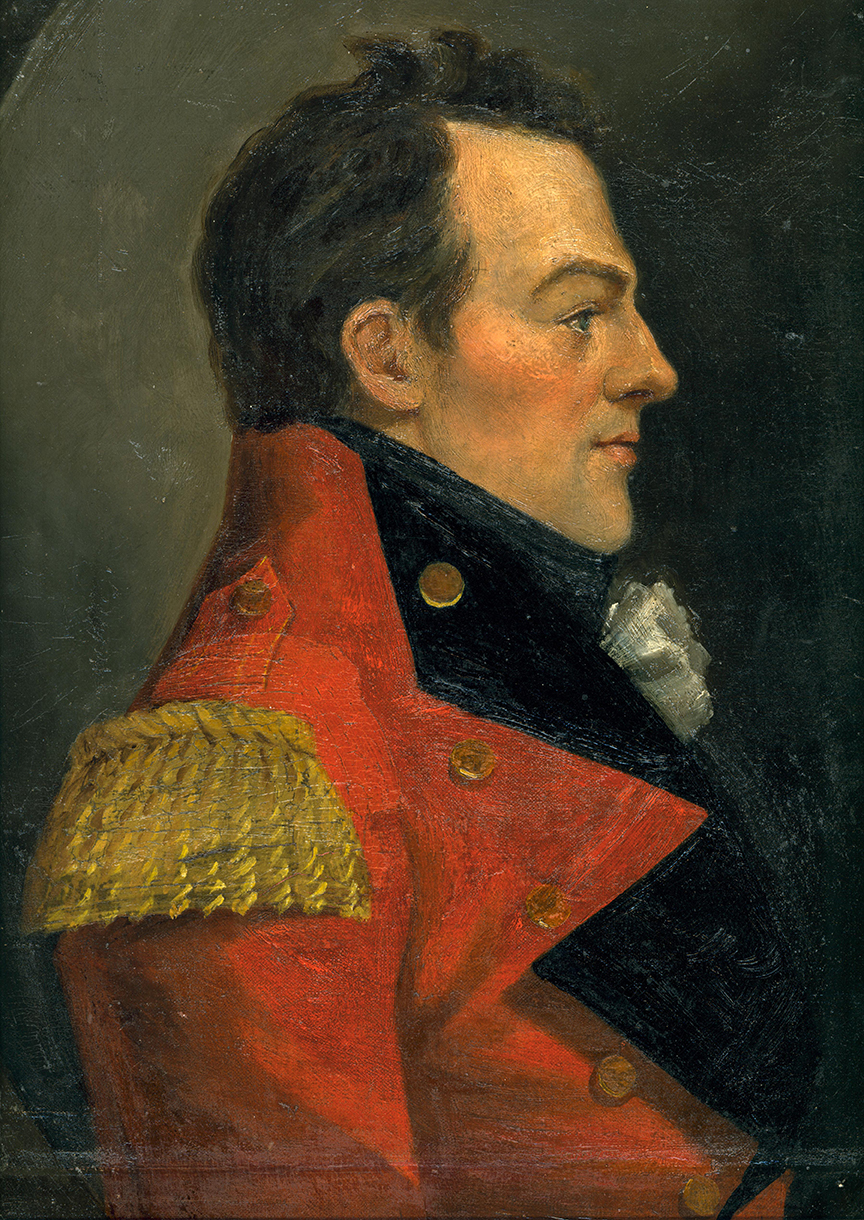

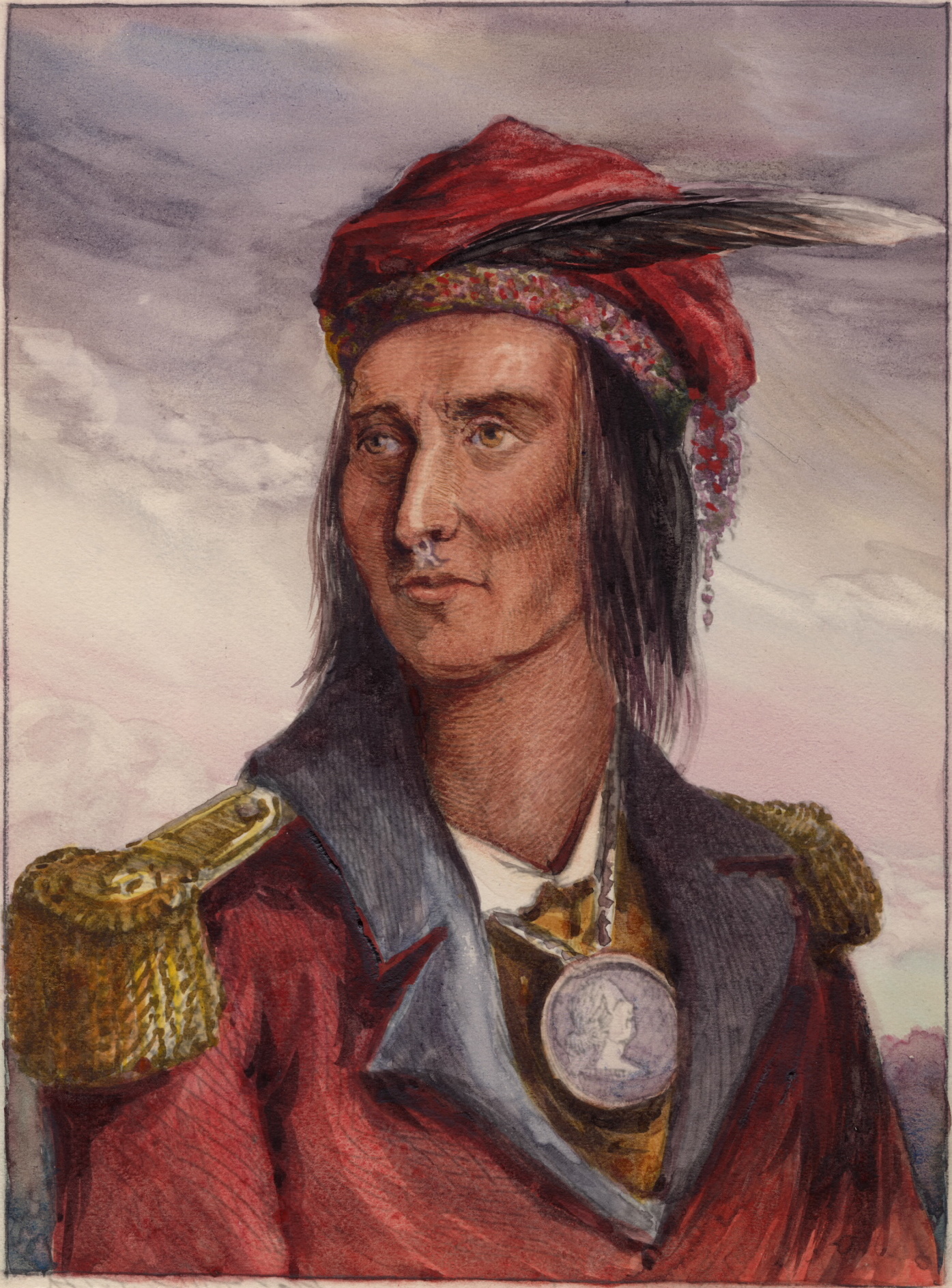







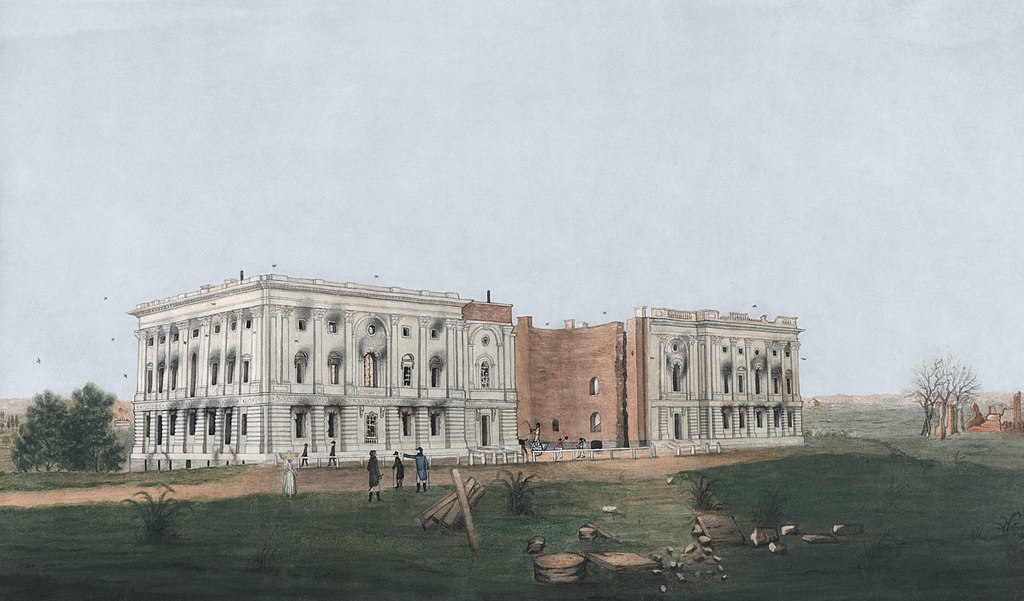
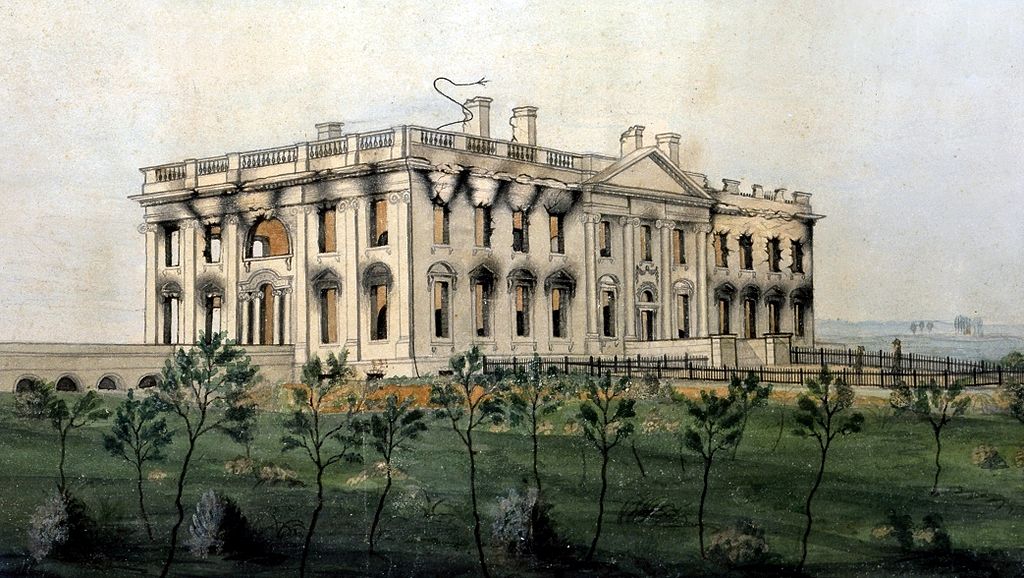

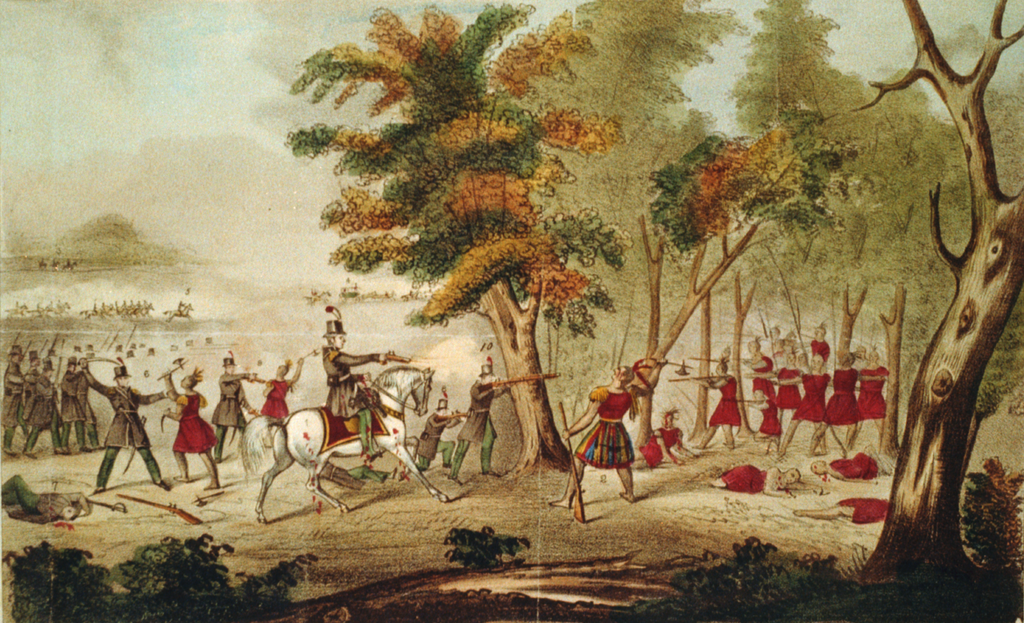

Enjoyed this very much. I will be reading the book you recommend since I had not seen it before. I hope you enjoy taking the period.
AntwortenLöschenThanks for your comment. Yes. It's a really interesting conflict and I like the Brigade Miniature models.
AntwortenLöschen